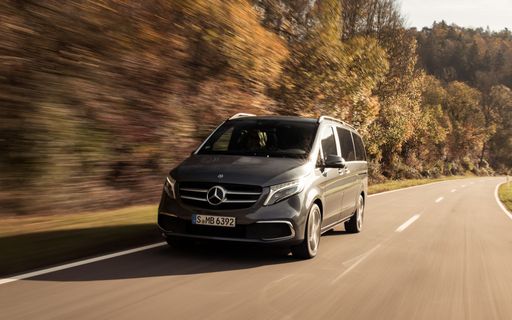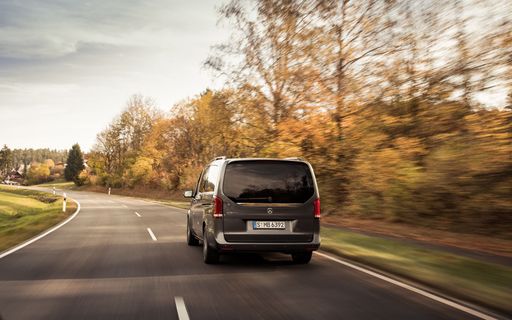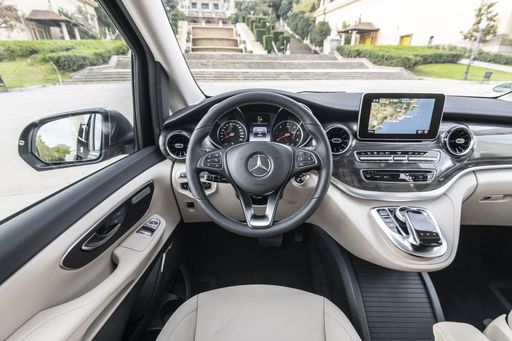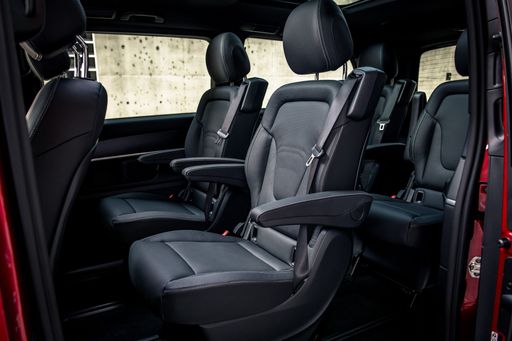Alfa Romeo Junior vs Mercedes V Class – Performance, range & efficiency compared
Two cars, one duel: Alfa Romeo Junior meets Mercedes V Class.
Which one wins in performance, efficiency and value for money? Find out now!
Costs and Efficiency:
When it comes to price and running costs, the biggest differences usually appear. This is often where you see which car fits your budget better in the long run.
Alfa Romeo Junior has a clearly advantage in terms of price – it starts at 25700 £, while the Mercedes V Class costs 48200 £. That’s a price difference of around 22493 £.
Fuel consumption also shows a difference: Alfa Romeo Junior manages with 4.80 L and is therefore clearly more efficient than the Mercedes V Class with 7.10 L. The difference is about 2.30 L per 100 km.
Engine and Performance:
Power, torque and acceleration are the classic benchmarks for car enthusiasts – and here, some clear differences start to show.
When it comes to engine power, the Alfa Romeo Junior has a slightly edge – offering 280 HP compared to 237 HP. That’s roughly 43 HP more horsepower.
In acceleration from 0 to 100 km/h, the Alfa Romeo Junior is clearly perceptible quicker – completing the sprint in 5.90 s, while the Mercedes V Class takes 7.40 s. That’s about 1.50 s faster.
In terms of top speed, the Mercedes V Class performs barely noticeable better – reaching 220 km/h, while the Alfa Romeo Junior tops out at 206 km/h. The difference is around 14 km/h.
There’s also a difference in torque: Mercedes V Class pulls clearly perceptible stronger with 500 Nm compared to 345 Nm. That’s about 155 Nm difference.
Space and Everyday Use:
Beyond pure performance, interior space and usability matter most in daily life. This is where you see which car is more practical and versatile.
Seats: Mercedes V Class offers a bit more seating capacity – 6 vs 5.
In curb weight, Alfa Romeo Junior is convincingly lighter – 1380 kg compared to 2192 kg. The difference is around 812 kg.
In terms of boot space, the Mercedes V Class offers significantly more room – 1410 L compared to 415 L. That’s a difference of about 995 L.
In maximum load capacity, the Mercedes V Class performs convincingly better – up to 5010 L, which is about 3730 L more than the Alfa Romeo Junior.
When it comes to payload, Mercedes V Class clearly takes the win – 908 kg compared to 420 kg. That’s a difference of about 488 kg.
Who wins the race?
The Mercedes V Class proves to be outperforms in nearly all aspects and therefore becomes our DriveDuel Champion!
Mercedes V Class is the better all-rounder in this comparison.
 @ Mercedes-Benz Group Media
@ Mercedes-Benz Group Media
Mercedes V Class
Alfa Romeo Junior
The Alfa Romeo Junior captures the essence of Italian design with its sleek lines and compact dimensions, making it an icon of elegance and performance. With a spirited driving experience and a charming retro aesthetic, it appeals to enthusiasts and casual drivers alike. This delightful car embodies the brand's rich heritage while remaining a fun and engaging option for those seeking a unique automotive experience.
details @ Alfa Romeo / Stellantis Media
@ Alfa Romeo / Stellantis Media
 @ Alfa Romeo / Stellantis Media
@ Alfa Romeo / Stellantis Media
 @ Alfa Romeo / Stellantis Media
@ Alfa Romeo / Stellantis Media
Mercedes V Class
The Mercedes-Benz V-Class exemplifies luxury and versatility in the world of multi-purpose vehicles. Its spacious interior is designed to accommodate both family adventures and executive travel with supreme comfort. With advanced technology and premium materials, the V-Class offers an unparalleled driving experience that seamlessly blends practicality with elegance.
details @ Mercedes-Benz Group Media
@ Mercedes-Benz Group Media
 @ Mercedes-Benz Group Media
@ Mercedes-Benz Group Media
 @ Mercedes-Benz Group Media
@ Mercedes-Benz Group Media
 @ Mercedes-Benz Group Media
@ Mercedes-Benz Group Media
 @ Alfa Romeo / Stellantis Media
@ Alfa Romeo / Stellantis Media
|
 @ Mercedes-Benz Group Media
@ Mercedes-Benz Group Media
|
|
|
|
Costs and Consumption |
|
|---|---|
|
Price
25700 - 41600 £
|
Price
48200 - 83300 £
|
|
Consumption L/100km
4.8 - 5.4 L
|
Consumption L/100km
7.1 - 10.2 L
|
|
Consumption kWh/100km
15.1 - 17.5 kWh
|
Consumption kWh/100km
-
|
|
Electric Range
344 - 410 km
|
Electric Range
-
|
|
Battery Capacity
0.4 - 51 kWh
|
Battery Capacity
-
|
|
co2
0 - 119 g/km
|
co2
187 - 232 g/km
|
|
Fuel tank capacity
44 - 45 L
|
Fuel tank capacity
57 - 70 L
|
Dimensions and Body |
|
|---|---|
|
Body Type
SUV
|
Body Type
Bus
|
|
Seats
5
|
Seats
6
|
|
Doors
5
|
Doors
5
|
|
Curb weight
1380 - 1689 kg
|
Curb weight
2192 - 2464 kg
|
|
Trunk capacity
340 - 415 L
|
Trunk capacity
610 - 1410 L
|
|
Length
4173 mm
|
Length
4895 - 5370 mm
|
|
Width
1781 mm
|
Width
1928 mm
|
|
Height
1505 - 1538 mm
|
Height
1901 - 1908 mm
|
|
Max trunk capacity
1205 - 1280 L
|
Max trunk capacity
4200 - 5010 L
|
|
Payload
390 - 420 kg
|
Payload
636 - 908 kg
|
Engine and Performance |
|
|---|---|
|
Engine Type
Electric, Petrol MHEV
|
Engine Type
Diesel, Petrol
|
|
Transmission
Automatic
|
Transmission
Automatic
|
|
Transmission Detail
Dual-Clutch Automatic, Reduction Gearbox
|
Transmission Detail
Automatic Gearbox
|
|
Drive Type
Front-Wheel Drive, All-Wheel Drive
|
Drive Type
Rear-Wheel Drive, All-Wheel Drive
|
|
Power HP
136 - 280 HP
|
Power HP
163 - 237 HP
|
|
Acceleration 0-100km/h
5.9 - 9.1 s
|
Acceleration 0-100km/h
7.4 - 10.7 s
|
|
Max Speed
150 - 206 km/h
|
Max Speed
188 - 220 km/h
|
|
Torque
230 - 345 Nm
|
Torque
370 - 500 Nm
|
|
Number of Cylinders
3
|
Number of Cylinders
4
|
|
Power kW
100 - 207 kW
|
Power kW
120 - 174 kW
|
|
Engine capacity
1199 cm3
|
Engine capacity
1950 - 1999 cm3
|
General |
|
|---|---|
|
Model Year
2024 - 2025
|
Model Year
2025
|
|
CO2 Efficiency Class
A, C, D
|
CO2 Efficiency Class
G
|
|
Brand
Alfa Romeo
|
Brand
Mercedes-Benz
|
What drive types are available for the Alfa Romeo Junior?
Available configurations include Front-Wheel Drive or All-Wheel Drive.
The prices and data displayed are estimates based on German list prices and may vary by country. This information is not legally binding.
